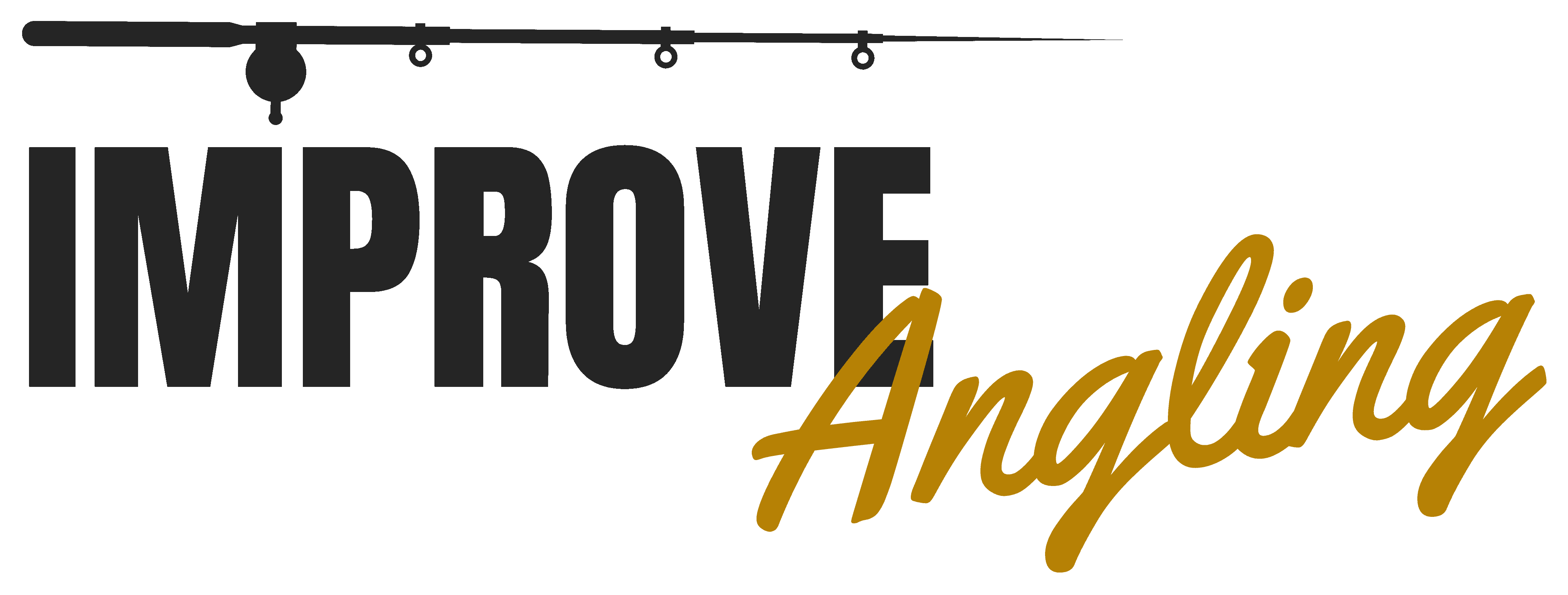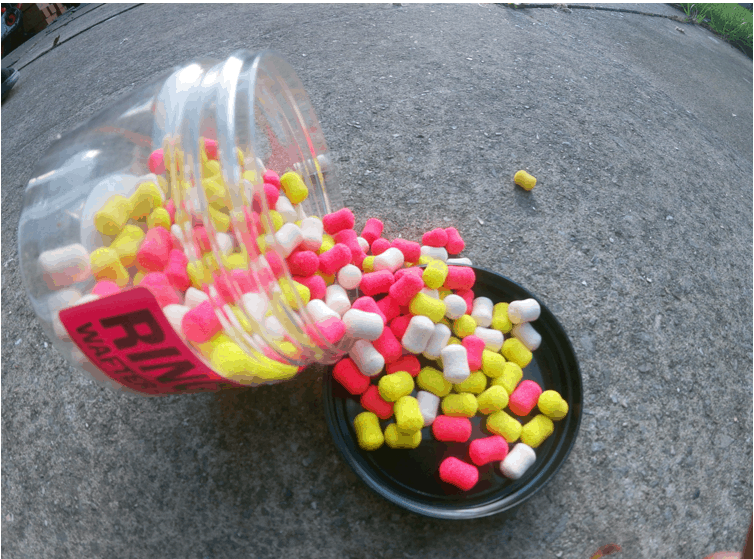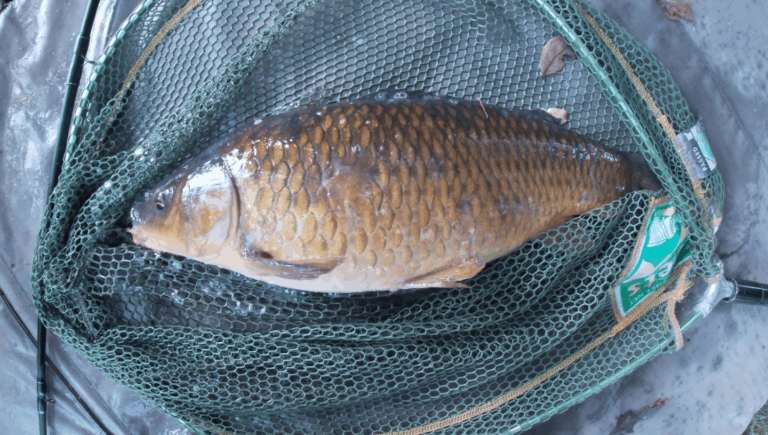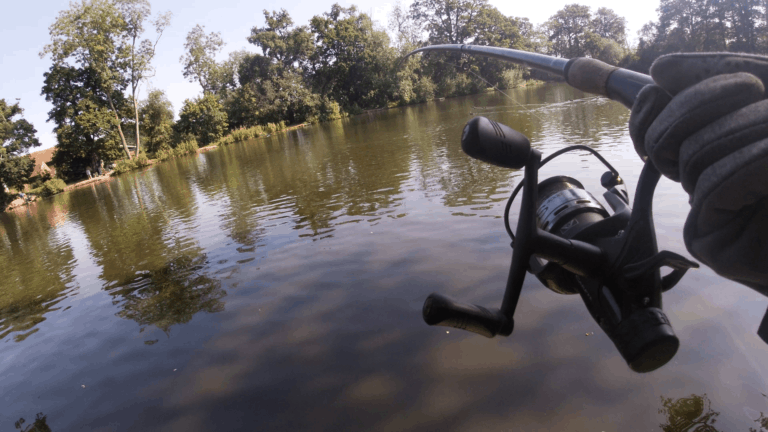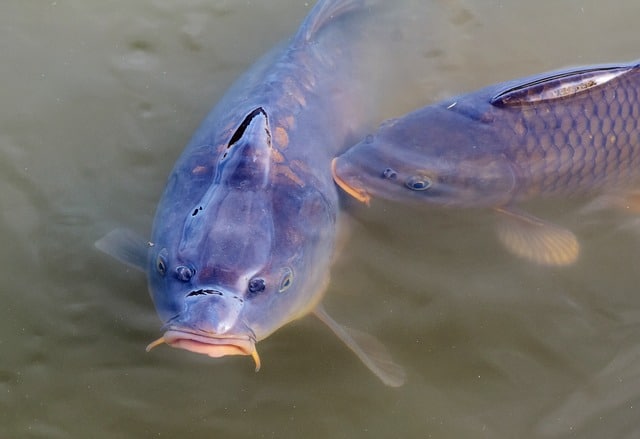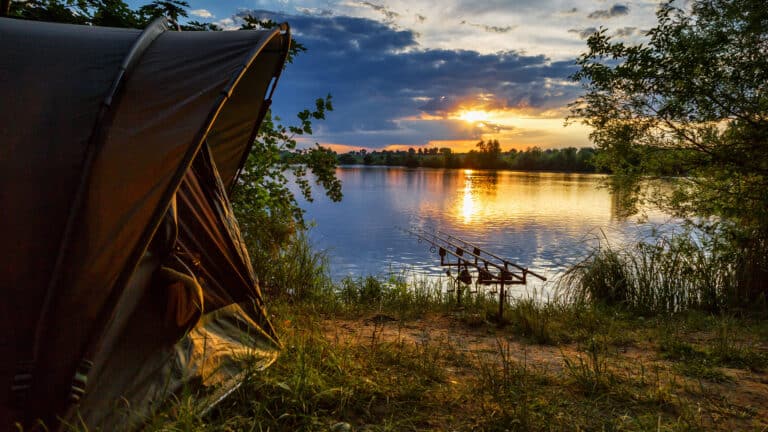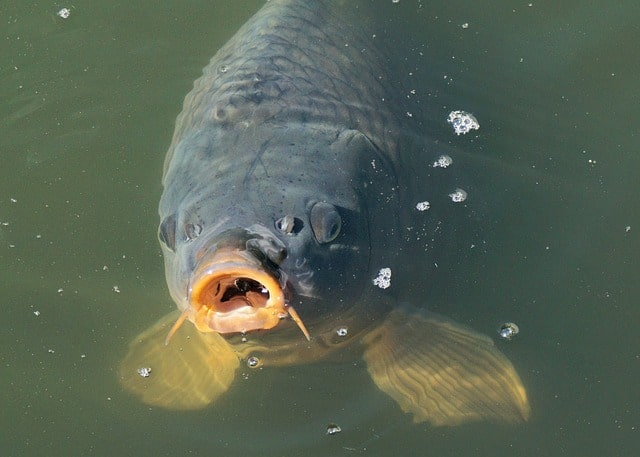Carp fishing tips for beginners – tips & tactics

Carp fishing can be a daunting and difficult task especially if you’re just starting out, even though it is fairly straight forward and easy to get the hang, we remember the countless blank sessions in our early carp fishing days. So we’ve put together a list of the most important tips for beginners to hopefully ensure you start catching from day 1.
In this article, we’ll be going through different key components of carp fishing as well as explaining things we used to find tricky. If you haven’t been having the best of luck on the bank, you may also find some of these tips useful. Without a further a do lest get into it.
1) Bait

Having the right bait is crucial, we’d recommend sticking with simple but effective baits, they will help with getting bites and are also easy to implement into your fishing. Focusing on trying simple float and feeder rigs are where we believe you’ll be most effective when starting out.
Here’s a list of baits that are easy and effective when catching carp, these baits are all essentials and will help you gain experience as quickly as possible:
- Sweetcorn
- Bread
- Pellets
- Boilies
- Pop-ups
- Maggots
- groundbaits
These are our go to carp baits that when used properly should help in maintaining an action packed swim. However, when using baits like pellets and maggots there are a few things to consider.
If your fishing at a smallish lake filled with lots of nuisance fish such as bream, then adjusting the size and type of your hookbait will ensure you don’t keep catching them. Using small pop-ups is a great way to do this, we find they’re usually too big for nuisance fish generally resulting in them leaving your swim.
A method we’d always recommend when starting out is feeder fishing, it’s a simple and effective technique that allows you to gain experience quickly whilst still giving you all the pleasures of catching emasculate carp. To find out how to feeder fish for carp, consider checking out our new course, method feeder fishing for carp. There we’ve put together a step by step guide of the entire process, however, if your interested in the bait we consistently use for this style of fishing then here’s a link to that:
Sonubaits carp groundbait (check price on Amazon)

We can’t say enough good things about this bait, to conclude if you’re looking to start feeder fishing for carp we’ve found other ground baits have given us know where near the amount of success as the sonubaits ground bait. Definitely worth picking up a bag if you’re looking to feeder fish.
Another technique we found to be very helpful when wanting to increase the attractiveness of our baits is spice. Carp love spice, it’s very pungent and it adds a massive amount of attraction to your hook-bait. Last time we went fishing we lightly coated some boilies with some spicy sauce which worked really well. Here’s a list of spices we found work brilliantly:
- Tumeric
- Paprika
- Chili flakes
- Salt
The bait you use should be simple and effective, providing you do this you’ll notice an increase in the number of bites. A tip for using baits is, sticking to what works, carp are familiar with all the baits we’ve listed meaning they shouldn’t be hesitant to feed, this is key if you want to catch continuously.
2) Tackle

Having the right tackle for the job is another key factor when wanting to catch the most carp, a simple float or feeder rod, carp reel, net and unhooking mat is all you’ll need to start off.
We’d recommend starting our with a good quality feeder rod, they perfect for beginners as well as being great for catching nice sized carp. Getting a good rod will mean you get the basics right, its a well worth purchase if your thinking about fishing regularly, you’ll be surprised the prices are also not too bad. If you want to know more about feeder rods then consider checking out our article on best feeder rods; best feeder rods.
The next thing you’ll need is a reel, there are lots of different options on the market sometimes making it hard to find the right one. We’d recommend going with something simple if your a beginner, getting used to using your reel is key if you want to remain hassle free on the bank. We, unfortunately, we learned the hard way that when starting out a simple reel is what you need. After countlessly tangling up multiple reels putting an end to sessions earlier than anticipated we knew something had to change. If you want more information on what reel to buy then check out our article on best carp reels
A net is another essential item of tackle, it doesn’t have to be anything fancy or cost a lot of money, as long as it gets the job done it will work just fine. Failing to have a net could result in an injured fish.
An unhooking mat is another bit of kit you should think about investing in, they provide a cushion for when those bigger fish are out of the water and make them a lot easier to handle without the risk of injury.
3) Choosing the right swim

When carp fishing, observation is the most important thing, more than tackle or bait, if you haven’t found this fish your chances of a bite will be very slim.
We’d always recommend doing a few laps of the lake before choosing a swim, it may be a time consuming process but it will be worth it in the long run. Once you’ve located the fish it puts you in a much better position for a bite, this is especially important if your fishing a bigger lake.
Look for splashes, ripples, bubbles, discolouration, and fish jumping. These are all clear indications that fish are present in those areas.
It is so surprising how many anglers just park themselves in the swim closest to their car and complain about not getting bites, you can have the fanciest rig in the world and all the best baits, but if there aren’t fish in your swim, you won’t catch any. Simple as that. If you want a more in depth guide of how to find fish in a lake then you may want to check out our article on how to find carp in a lake.
Another bit of kit we’d definitely advise purchasing is a pair of polarized sunglasses, they make spotting fish much easier and allow you to look at the lake without the constant glare of the sun making it uncomfortable.
They’re not technically essential for catching carp however will make your life a lot easier. If you’re interested in picking a pair up then here’s a link to the ones we use; Verdster TourDePro Polarized Camo Sunglasses (check price on Amazon)
Once you find the carp then it’s simple, bring all your gear to the swim and start fishing, make sure during this stage you don’t spook the fish. Be as quiet and camouflage as possible, bigger carp are much more intelligent and tent to be more cautious.
4) Good quality hooks

There is a range of hook options for carp fishing which all have their advantages and disadvantages, knowing when to what hook is key.
For fishing with pop-ups, wide-gape hooks are probably best suited for the job. For bottom bait fishing a longer hook shank is preferable as the carp engulf bait on the lake bed.
Take precaution when using hooks, lots of them are chemically sharpened. Ensuring you have some good quality hooks will mean you’re going to get a better hook hold in the carps mouth and have a better chance of the hook piercing the carps bottom lip when sucked up.
Cheaper hooks won’t work as well by any means so stick with big names brand on this one for the best results. We’d recommend choosing the right hook size that’s best suited to your style of fishing. Smaller hooks are perfect for float and feeder fishing, however, when fishing with bigger baits, it’s advisable to use bigger hooks.
5) Present rigs well

Whenever you’re fishing its good practice tie clean rigs, doing so will mean your rigs are always presentable on the lake bed leading to increased chances of a bite.
When presenting a rig on different surfaces you need to take into consideration a few different variables from the colour of the line to the buoyancy of the bait. When fishing on a weedy lake using a pop-up is what we like to do in order to make sure the bait is visible. Different lakes have different features under the water, in order to present a rig perfectly its important to determine the snags are as well as the clear spots.
A tip we recently found to be very useful is casting out a lead in order to feel the lake bed. You can really pick up quite a lot when doing this, next time your fishing a larger lake, give it a go.
A well presented rig needs to have tight correctly tied knots, if your line snaps you can tell if it was due to overstrain or a poorly tied knot, if the line is cleanly snapped it was due to strain if it has curls, in the end, it was due to your knot being tied incorrectly or too loose.
Using the right line, knots, and rigs for where you are fishing will give you the best possible chances of a bite.
One of our all-time favourite rigs is the humble method rig, it’s bought us unparalleled amounts of success when compared to other rigs. For this reason alone we’ve decided to release a curriculum based course going through every aspect of method feeder fishing. If you’d like an actual guide on how to implement this technique properly into your fishing then sign up today! Learn method feeder fishing
6) Boilies or Pop-ups

Boilies are the most popular baits among carp anglers, they generally come in two different types, Sinking Boilies or Floating Boilies (Pop-ups).
Sinking Boilies are great and work well as a hookbait and as loose feed, they work by lying on the bottom of the lake waiting for a carp to come to suck them up, which is fine however the issue with this, is they caught in snags especially if the lake bed is weedy.
Pop-ups, on the other hand, are strictly a hookbait, they are easy to differentiate from boilies as they are often much more brightly coloured and come with specific scents flavoures, etc. Since pop-ups float they keep the hookbait out of the weeds, making it easier for the carp to find and significantly reduce the chances of getting snagged up.
Depending on where and how your fishing use one on the other, we found they both worked fantastically and have caught us many carp however knowing where and when to use either one is essential. If you’re interested in seeing what we use then here’s a link to that; Check price on Amazon
7) Think about Seasons
In different times of the year, different tactics are required. What worked brilliantly in one season may cause you to blank in another. Carp fishing doesn’t have to seasonal as many anglers think and you can still have great success in the colder weather if you implement the right techniques, here are a few tips we like to use during the winter and summer.
Winter

Later in the day– the optimum time for bites in the winter is later in the day (3 pm)
Downsize – fishing large lakes in the winter is incredibly difficult because the carp are so difficult to find, try fishing smaller lakes which are heavily stocked. This is because in the winter carp remain in groups, they’re very concentrated in small areas, whereas in the summer they are spread out much more and actively feeding.
Observe – it becomes so difficult in the winter to spot any kind of activity, but you have to remain patient and watch the lake, this can become tedious but it also can be rewarding, look for the smallest signs for fish, the occasional bubble perhaps or a ripple on the surface.
Don’t overfeed – since carp feed much less in the winter, throw out less bait, this will mean you have a higher chance of a carp finding your hook bait.
Stay comfy – Sitting hours in cold and rain is very uncomfortable, whenever you’re going on winter trips take your bivvy and warm clothes because it’s absolutely freezing! Keeping warm is a very important part of winter fishing; it keeps you comfortable enough to stay motivated on the bank to wait a little longer for a bite.
Winter fishing is difficult and does require patience and perseverance. Hopefully, this article left you a little more confident about winter fishing, and in your next session, you can have a few more carp on the bank. To see out favorite carp baits for the winter check out one of our other articles on best winter carp baits.
Summer

Fishing in the summer tends to be a lot easier because the carp are feeding much more and spread across the lake, which is why we love fishing in the summer, here are a few tips for summer carp fishing.
zigs-Most carp anglers use bottom baits as carp are bottom feeders, during the summer this is how you should be fishing the majority of the time.However, carp also feed on the surface, and if you’re not seeing any action on your bottom baits try using a zig rig. It’s a lure that sits on the surface and to the fish, it appears to be a fly or an insect.
Ground bait-When using ground-baits we like to include a range of baits with different breakdown rates, ranging from ultra fine pellets and hemp to big chunks of boilie. You do have to take into consideration where you fishing though, if your at lakes with a lot of nuisance fish you’ll often find bream getting to your small particle baits before the carp can.
Stalking Carp-This is one the most fun methods to catch carp in the summer, it sounds unbelievable but we’ve caught over 30 carp in a day session with this method. The method we found to work best is baiting up your swim with bread. This get’s the carp continuously coming up to the surface, significantly increasing your chances of a bite. Next fling out a ball of bread on hook and bingo! watch the fish role in.
If you would like a more in depth guide of how to catch carp in the summer then check out one of our other articles on; how to catch carp in the summer
So there you have it, our top tips for beginers, if you found this article useful then feel free to check out some of our others @carpreviews.co.uk
